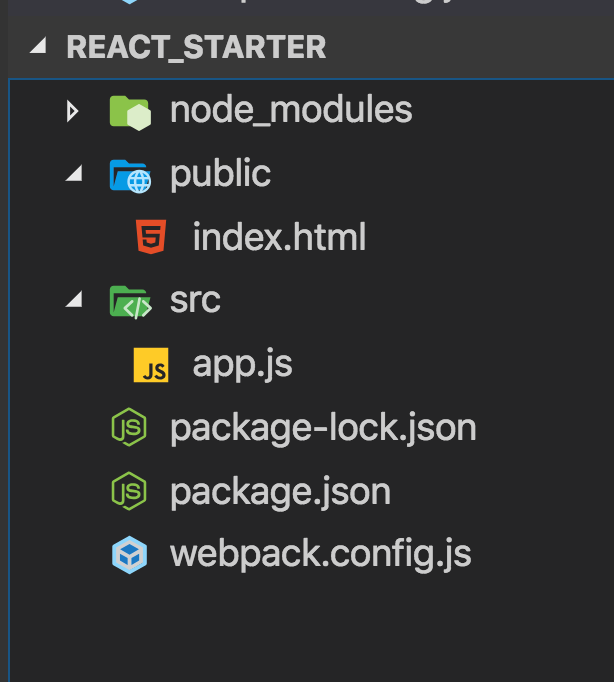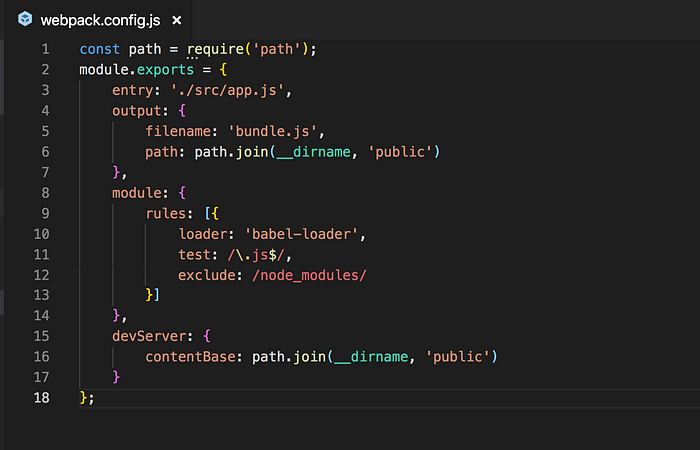React is the most loved and popular javascript library in the world for creating front end applications.
React is famous because of the following reasons.
React’s simplicity in terms of syntax makes it a lot easier to learn for a developer who has a good working knowledge of HTML. This is one of the main factors that bring React points ahead in the React vs Angular vs Vue comparison.
React comes with high flexibility and responsiveness.
React uses Virtual DOM which allows making the DOM changes quickly and makes the application faster.
React is a 100% open source library, which gets a number of everyday improvements and updates because of the contributions made by developers around the world.
The easy way of creating a react application is using a create-react-app tool created by the Facebook team. This is good to start working on React but it hides a lot of details regarding:
- What happens under the hood
- What configuration is needed to work with the latest features
- How the conversion from ES6 to ES5 happens
To get an understanding of all of these, in this article we will set up webpack + Babel from scratch to work with React.
So without wasting much time, lets start with the configuration.
- Create a new folder with the name
react_starter( You can name anything you wish). - Create a
package.jsonfile inside it by running the following command in terminal:
npm init -y
- Install babel and the plugins required for using babel by running the following command:
npm install @babel/core@7.7.4 @babel/preset-env@7.7.4 @babel/preset-react@7.7.4
Let’s understand what these packages do.
@babel/core— It provides basic core babel configuration@babel/preset-env— It allows to work with the latest ES6/ES7/ES8 features@babel/preset-react— It allows to work with react syntax which is JSX
- Create a new folder with the name
publicand create a new fileindex.htmlinside it with the following content:
Create a new folder
srcand a new file with the nameapp.jsinside itCreate a new file with the name
webpack.config.jsinside thereact_starterdirectory and add the following content inside it:
Here, we are telling webpack, what is the entry point of the application and to put the generated output file bundle.js inside the public directory.
This is how your folder structure will look like now:

- Now install the
webpack,webpack-cliandwebpack-dev-server(which is used to serve thepublicdirectory and reload the changes in the browser when we make any change in the code)
Execute the following command to install it:
npm install webpack@4.41.2 webpack-cli@3.3.10 webpack-dev-server@3.9.0
- Now to inform
webpack-dev-serverto load files from thepublicdirectory, add the following code inwebpack.config.js:
devServer: {
contentBase: path.join(__dirname, 'public')
}
Now your webpack.config.js file will look like this:

- Now to install
react,react-domandbabel-loader, run the following command in terminal:
npm install react@16.12.0 react-dom@16.12.0 babel-loader@8.0.6
- Now we will set up the
babel-loaderwhich will convert your ES6 and React code to ES5.
Add the following code in webpack.config.js after the output property:
module: {
rules: [{
loader: 'babel-loader',
test: /\.js$/,
exclude: /node_modules/
}]
}
Here we are telling babel-loader to look for only .js files to convert to ES5 code but exclude the .js files from the node_modules directory.
Now your webpack.config.js file will look like this:

- Now create a new file with the name
.babelrc(Note the file name starts with a dot) and add the following content inside it:
This file will tell the babel-loader to use env and react presets (which are just plugins) for converting ES6 to ES5 code.
Now, let’s write some React code to check the application.
Add the following content in app.js file which is inside the src directory:
Now to run the application, we need to make two changes:
a) Include the bundle.js file in index.html which will be generated by the webpack.
Add the following line in index.html after the div tag:
<script src="bundle.js"></script>
So the final index.html will look like this:
b) Add the following two scripts to package.json ( Replace the old scripts entry)
"scripts": {
"build": "webpack",
"start": "webpack-dev-server --watch"
}
So the package.json will look like this now:
Now to inform the webpack, that it should run in development mode (default is production mode) to speed up the build process, add the following line in webpack.config.js file:
mode: 'development'
Now, your final webpack.config.js file will look like this:
To run the application, execute the following command from the terminal
npm start
Now navigate to http://localhost:8080/ and you will see your contents from app.js as shown below:

Congratulations! You have done it.
Now, try making any change in app.js like changing "Welcome to REACT!" to "Welcome to REACT!!" and save it, you will see that webpack-dev-server will automatically restart your application and you will see the changes reflected in the browser.
Note: webpack-dev-server will serve the bundle.js directly and will not create a local file inside the public folder to speed up the page loading.
You can manually create the bundle.js if required by executing the following command:
npm run build
Note that, we have already added the build script previously in package.json.
You can find the complete source code for this application in this repository.
Thanks for reading!
Want to learn all ES6+ features in detail including let and const, promises, various promise methods, array and object destructuring, arrow functions, async/await, import and export and a whole lot more from scratch?
Check out my Mastering Modern JavaScript book. This book covers all the pre-requisites for learning React and helps you to become better at JavaScript and React.
Check out free preview contents of the book here.
Also, you can check out my free Introduction to React Router course to learn React Router from scratch.
Want to stay up to date with regular content regarding JavaScript, React, Node.js? Follow me on LinkedIn.



